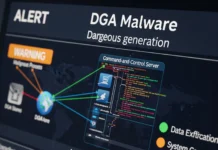Running a small business is challenging enough without the added burden of implementing cybersecurity measures. Some of you might even consider this an overkill, but make no mistake, neglecting cyber threats in this day and age can be a fatal oversight.
Small businesses currently account for 40% of all cyberattacks each year, with an average of $25,000 lost by SMBs as a result. Attacks of this nature do more than just disrupt your business and its operations, they can compromise your customers’ data, and potentially even cripple your business for good.
Most small business owners often put off cybersecurity measures citing cost and complexity, however, this isn’t always the case. In this article, we try to demystify cyber protections, with practical and actionable steps to better protect your fledgling enterprise.
Understanding The Risks
Before we dive into the solutions, it is essential to understand the nature of threats facing small and medium-sized businesses.
To begin with, cybercriminals don’t discriminate based on the size of a business. A multi-billion dollar global enterprise, and a small brick-and-mortar outlet, are both equally fair game if they lack the necessary defenses to combat such attacks.
In fact, small businesses are a lot more lucrative targets, considering they usually have less sophisticated defenses and fewer resources to deal with the aftermath.
The most common types of cyber threats in this regard include,
- Phishing Attacks: These mainly involve emails or other forms of correspondence that appear to be from reputable sources, such as your bank, credit card company, or any other well-recognized brand, only to lure users and convince them to part with sensitive data with a false sense of security.
- Malware: This involves malicious software designed to harm or exploit any programmable device, service, or network.
- Ransomware: A type of malware that locks users out of their systems or data, demanding a ransom to restore access.
- Data Breaches: Unauthorized access to business data can have devastating consequences, especially if sensitive or personal information is involved.
Understanding these risks is the first step toward developing a cybersecurity strategy that addresses the specific vulnerabilities of your business.
Simple Steps To Start Securing Your Business
With a clear understanding of the threats, here are some straightforward steps you can take to start securing your business,
- Educate Your Team: Your first line of defense in the battle against cybercrime is your staff. Keep your employees educated about safe online practices, and train them to better identify phishing emails and other online threats to keep your business safe.
- Implement Regular Software Updates: Cybercriminals often exploit vulnerabilities in outdated software. Ensuring that all software is up-to-date is a simple yet effective way to protect your business.
- Data Backup: Regularly back up data and ensure that backups are stored securely. In the event of data loss due to a cyber attack, backups will enable you to restore information quickly and continue business operations with minimal downtime.
- Secure Your Networks: Use firewalls to secure your internet connection. Consider setting up a Virtual Private Network (VPN) if your employees are accessing your network remotely.
Budget-Friendly Security Tools
Cybersecurity doesn’t have to be expensive. There are numerous budget-friendly tools available that can significantly enhance your business’s security:
- Antivirus Software: Provides basic defense against malware and other threats.
- Firewalls: Help block unauthorized access to your networks.
- Two-Factor Authentication (2FA): Adds an extra layer of security by requiring two forms of identification before granting access to systems.
- Secure Cloud Storage: Offers a safe place to store data online and can provide automatic backups.
Many cybersecurity vendors offer free or low-cost options tailored to the needs of small businesses. These tools can provide substantial protection without a hefty investment.
Creating A Response Plan
Despite your best efforts, the possibility of a breach is never zero. Preparing for a potential cyber incident is as important as trying to prevent one. An effective response plan should include:
- Immediate Steps: What to do the moment you discover a breach.
- Communication Plan: How and when to communicate with stakeholders.
- Containment Strategies: How to limit the damage.
- Recovery Plans: How to restore data and resume operations quickly.
Consider working with a cybersecurity vendor or IT service provider located close to your business to ensure optimal response times.
For instance, if your business is based on the west side of California, leveraging reputable San Francisco IT support solutions can provide the expertise and swift response needed to mitigate cyber threats effectively.
Conclusion
No matter how small or new your business is, never make the mistake of skimping on, or ignoring cybersecurity. With plenty of cheap and simple solutions available, all it takes is a few hours of effort to safeguard your business, employees, and customers from nefarious actors located across the globe.
This is, however, not a one-and-done deal, and requires regular auditing and reviews to ensure that you are protected against the latest threats. Over time, this will be akin to your yearly audit and tax compliance requirements, something you get used to as a regular aspect of doing business.



































